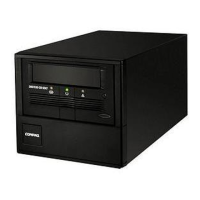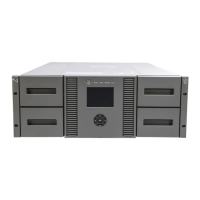4 Configuration
Included topics:
• Configuration overview, page 43
• Configuration best practices, page 43
• Supported software tools, page 43
Configuration overview
Regardless of the operating system environment or software tool used to configure the disk enclosure,
the following tasks must be completed:
• Updating controller firmware or drivers. Instructions are included with the controller.
• Updating disk enclosure firmware. Instructions are included with the firmware. For more information,
see “Updating disk enclosure firmware” on page 48.
• Configuring the disk enclosure and its storage.
• Creating the logical storage units (LUNs).
• Entering global controller settings, such as setting the read/write cache ratio, setting the re-
build/expand priority, and setting the redundancy level.
• Identifying the operating system type (also called Host Mode or Profile) of the host that will
access the disk enclosure. This ensures that the disk enclosure will communicate properly with
that host.
• Verifying that the configured storage is visible to the host.
Configuration best practices
• Maintain detailed records of your storage network, including information about the hosts and disk
enclosures. A brief worksheet is provided on the getting started instructions poster, shipped with
the disk enclosure. However, HP recommends creating your own spreadsheets and maintaining
detailed records.
Supported software tools
The following is a partial list of the tools that are supported for use with the disk enclosure:
• HP Systems Insight Manager, page 44
• HP Array Configuration Utility, page 45
• Option ROM Configuration for Arrays (ORCA), page 46
• Smart Components for firmware updates, page 46
D2600/D2700 Disk Enclosure User Guide 43
